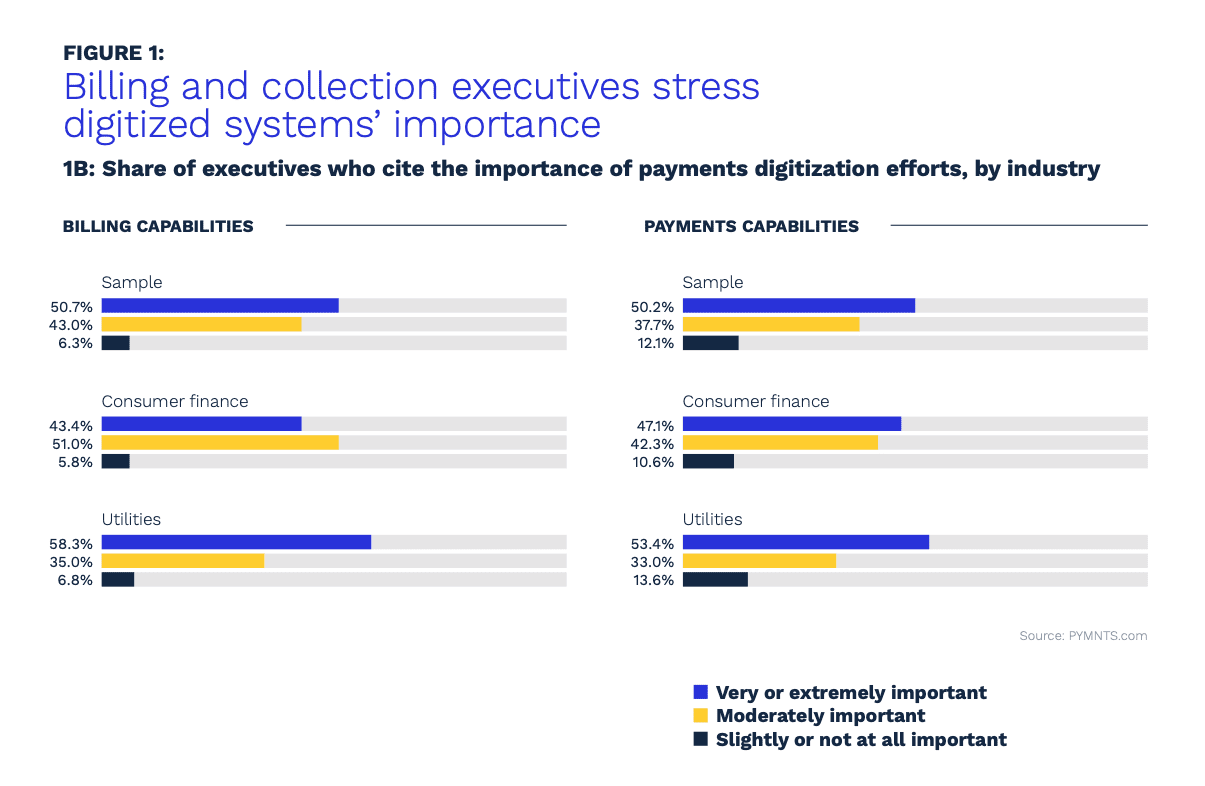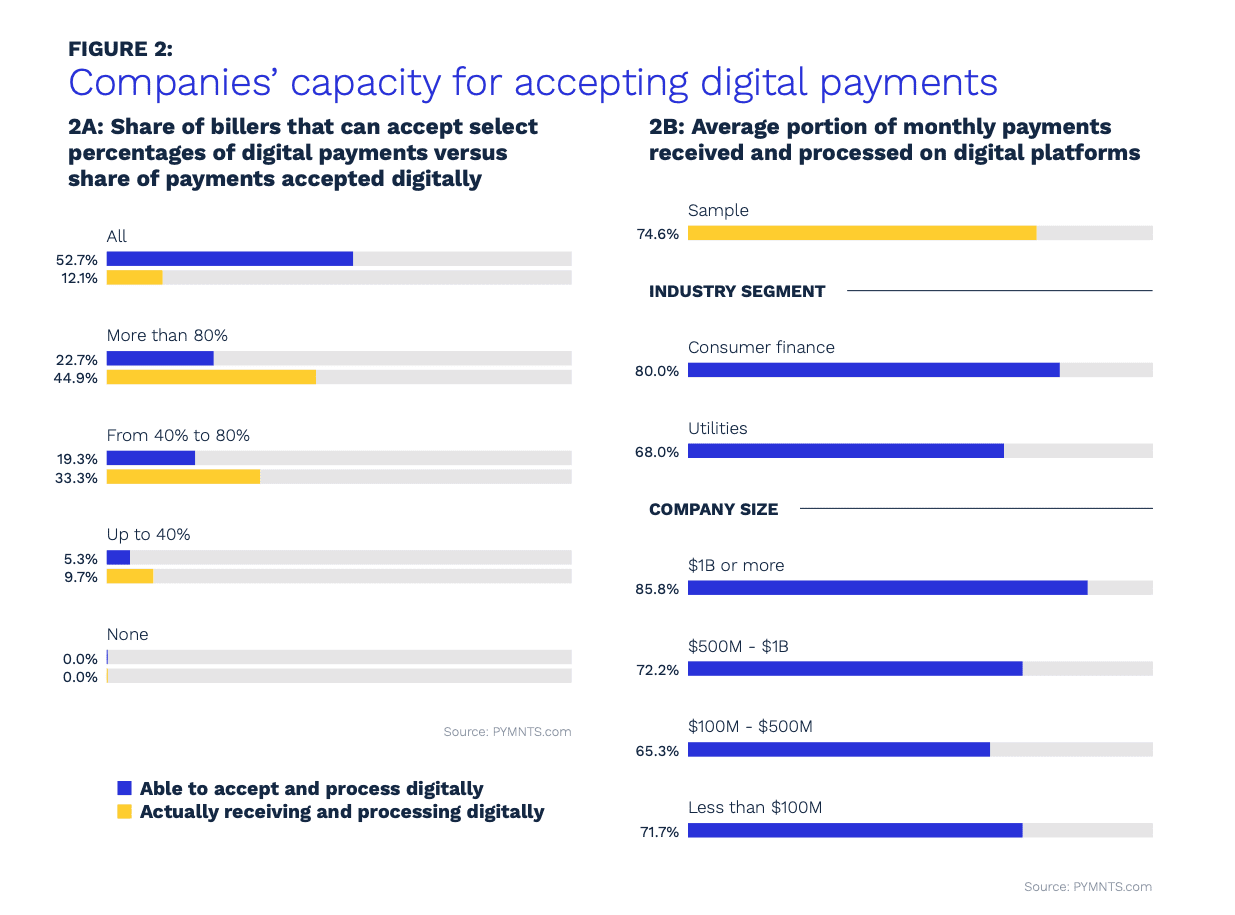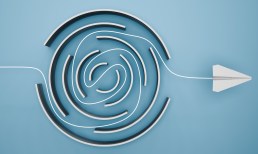While there’s been a longstanding trend toward digitized workflows and business processes among all businesses, the utilities and consumer finance industries have been particularly aggressive in digitizing their processes.
That’s been the case partly because of the high volume of payments they handle, according to The Digital Payments Edge, a PYMNTS and ACI Worldwide collaboration that surveyed 207 billing and collections professionals at utilities and consumer finance companies.
Get the report: The Digital Payments Edge: How Utilities And Consumer Finance Companies Can Enhance The Bill Payments Experience
The interest in digitized billing is higher among utility companies than among consumer finance firms. The survey found that 58% of the executives at utilities firms say digitization is “very” or “extremely” important, while 43% of those at consumer finance companies say the same.
There is a slightly smaller difference in digitizing payments, with 53% of utilities executives and 47% of consumer finance executives reporting that doing so is highly important to helping their companies reach their goals.

These executives also cite business environment digitization as a factor that will significantly impact industry growth in the next five years. Among the billing and collection executives surveyed, 55% of those from utilities and 40% of those from consumer finance companies stressed digitized systems’ importance.
Advertisement: Scroll to Continue
Companies’ capacity for accepting digital payments has outpaced their customers’ use of digital payments.
The survey found that while 53% of the billers say they can accept all digital payment methods, only 12% say all their payments are accepted digitally.
Twenty-three percent of billers reported that they can accept and process digitally more than 80% of digital payment methods, while 45% said they are actually receiving and processing digitally more than 80% of their payments.
Overall, the average portion of monthly payments received and processed on digital platforms is 75%. Among consumer finance firms, that figure is 80%, while among utilities, it’s 68%.







